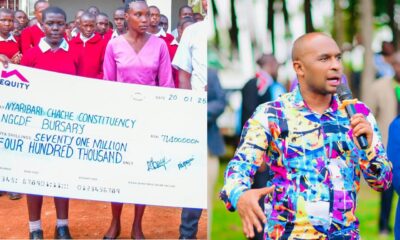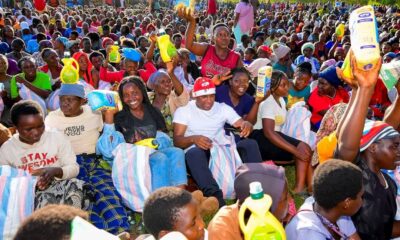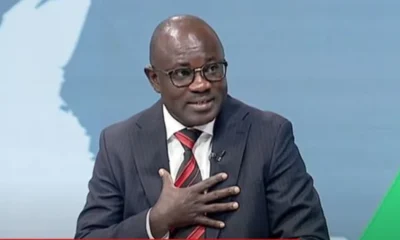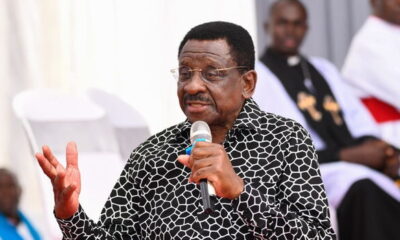To understand the current opinion polls, you need to go way back to eight days before December 10, 2021, the date Azimio was launched at the Kasarani Stadium.
This is because the launch of Azimio was preceded by a meeting of members of Raila’s Think Tank, which included four senior government officials. The meeting took place at an exclusive lodge in Kajiado, off the Nairobi-Namanga Road. It was at this meeting that the idea of twisting opinion polls to shape public perception was agreed.
Consistently leading
You see, up to this point, all public and non-public polls showed William Ruto consistently leading. This despite the state and Raila’s allies literally throwing the kitchen sink at him. They called Ruto a thief, corrupt, dangerous, vengeful and a tribalist. The polls stayed strong. They intimidated, harassed and cut loose his allies in the Jubilee Party, Parliament and state agencies. The poll ratings continued to climb. They weaponised state institutions against him and his allies. Ruto’s popularity continued to grow.
They kept waiting in vain for Ruto’s popularity to decline and for Raila’s to rise. It was time to do something – urgently. The idea they settled for was simple: sponsor and falsify polls every month starting in January, and show Raila steadily gaining ground, catching up and eventually overtaking Ruto.
To give it credibility, partner secretly with a major media company and time the release of poll results to coincide with the major political events – for example, the launching of Azimio in December 2021, the launching of Azimio la Umoja One Kenya Coalition in March and the naming of Raila’s running mate in May.
The next series of opinion polls will be designed to reinforce the narrative that Raila has pulled ahead. The objective is not just to influence public opinion, but a means to more sinister plans.
A closer look reveals the mischief. According to the polls trend graph published in the newspapers on May 12, 2022, Raila’s popularity in November was at about 23 per cent and Ruto was at 38 per cent. A few weeks later in December, Raila had gained 10 points and was now at 33 per cent and Ruto had dropped by six percentage points to 32! In February 2022, Raila had dropped to 27 per cent and Ruto had bounced back to about 38 per cent. From then on, Raila has been on a steady climb – gaining about 13 points in three months. Meanwhile, Ruto is shown as losing ground steadily since April.
A key question is: what accounts for Raila’s rapid rise? If the main reason is the cobbling together of a large coalition, we all know the wrangles that have rocked it. How can the loss of Mudavadi, Wetang’ula, Mutua, Kingi and the indecisiveness of Kalonzo have the effect of increasing Raila’s poll numbers?
Also, is it possible that Raila would announce his running mate late on May 18 and, 24 hours later, a poll is released showing him ahead of Ruto?
The scheme is patently clear: falsify the polls to show Raila winning. Such attempts have been futile in previous elections. To understand why, go no further than the Infotrak polls of 2013 and 2017. The desperation is amazing to behold!
To claim that Raila has overtaken Ruto in popularity because of the choice of Martha Karua as his running mate is to take refuge in fantasy. As soon as the electorate sees through the top-down tokenism that Karua’s choice represents in contrast to Kenya Kwanza’s truly historic performance in the women and youth agenda, Azimio’s goose will be cooked. Kenya Kwanza nominations brought out youth and women in historic numbers. UDA alone has six women candidates contesting governor seats. Azimio has two!
Furthermore, Kenya Kwanza’s Bottom-up economic model is designed to lift up those at the bottom of the economic pyramid, the majority of whom are women.
Another first for Kenya is the commitment by William Ruto to appoint women to 50 per cent of Cabinet positions.
A gender-balanced Cabinet will truly be historic for our country.
While we are at things historic, consider and contrast Raila’s and Ruto’s approaches to the economy.
Kenya Kwanza’s approach is to democratise economic opportunity through a bottom-up consultative approach, the grassroots economic forums.
Once opportunities are collated and prioritised in a governing manifesto, a Kenya Kwanza government will set aside at least Sh100 billion annually to support organised economic interest groups at the micro, small and medium enterprise level.
In contrast, Azimio did the usual top-down thing: release a 10-point agenda and then go to rallies talking down hustlers.
Of late, in an attempt to copy-paste our approach, they have suddenly remembered there is a jua kali sector.
The fake polls and false ‘historic’ gender nomination are but desperate moves by Azimio.
Kenyans will not be fooled.
Mr Irung’u is a Nairobi-based businessman.

 General News1 week ago
General News1 week ago
 General News5 days ago
General News5 days ago
 Politics5 days ago
Politics5 days ago
 General News3 days ago
General News3 days ago






